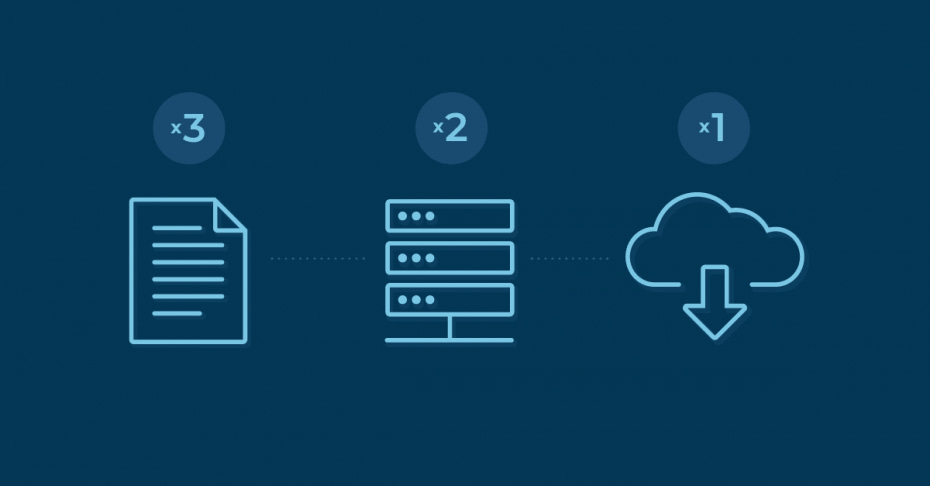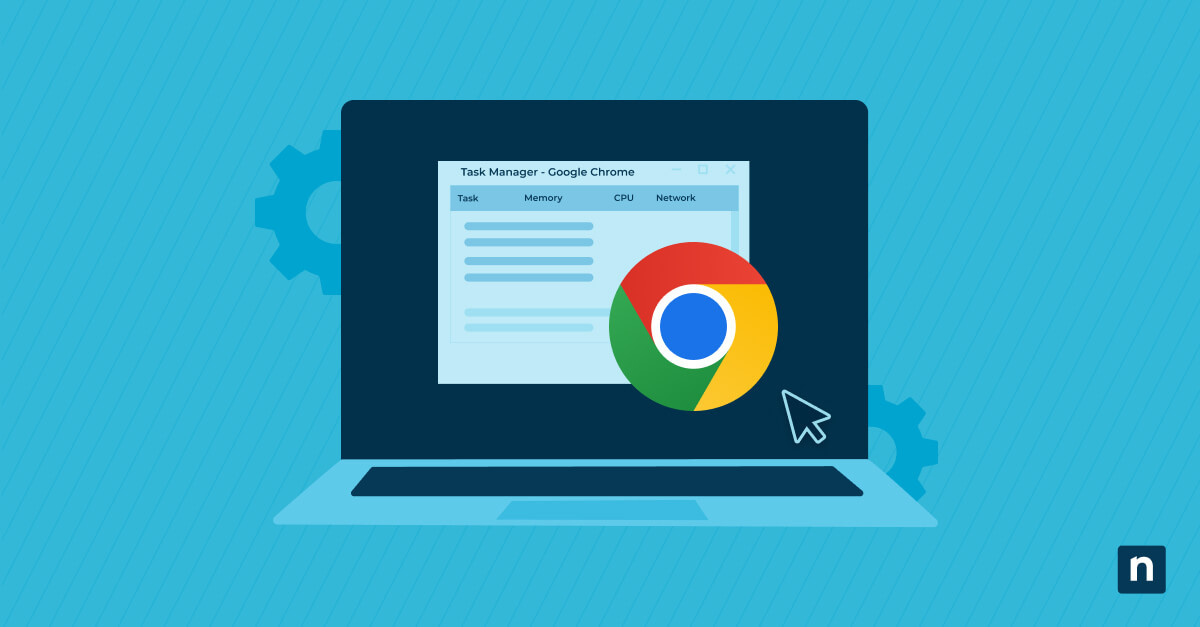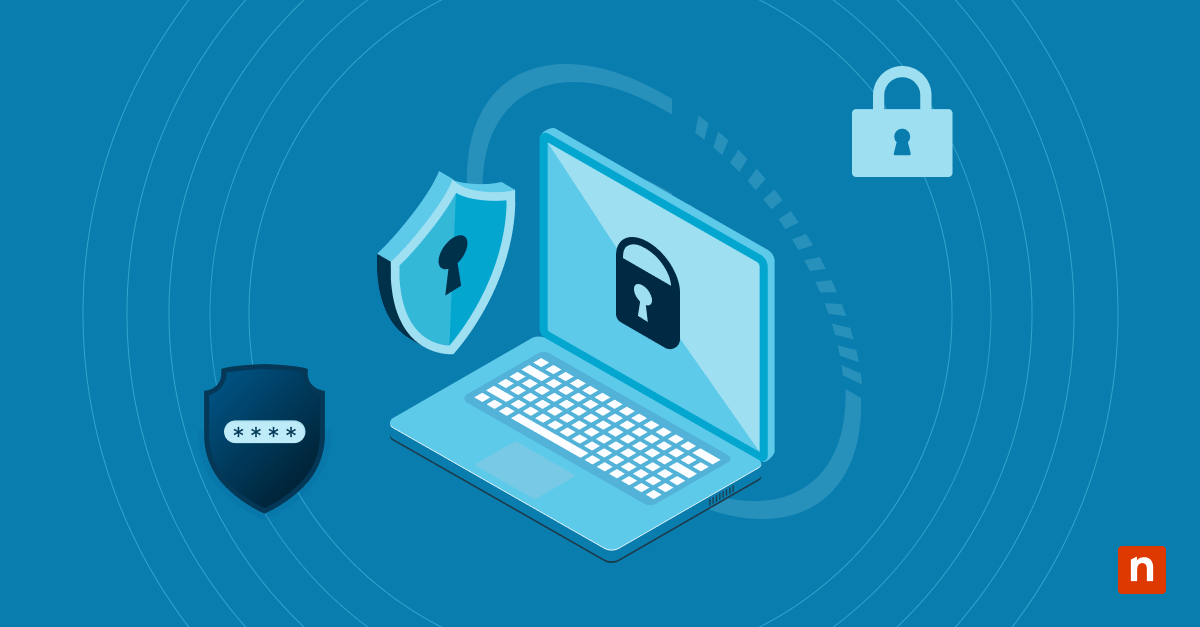Data disasters are practically inevitable, but a planned out backup strategy can combat their damaging effects. The Cybersecurity and Infrastructure Security Agency (CISA) of the U.S. government is a major organization that recommends sticking to a 3-2-1 backup strategy. Follow the 3-2-1 backup rule to ensure that your data is kept safe.
What is the 3-2-1 backup rule?
The 3-2-1 backup rule states that you should have at least three copies of your data; two of the backups should be stored on different types of media, and at least one backup should be stored offsite or in the cloud.The goal of the 3-2-1 backup rule is to ensure that if a backup fails, you have other backups in place to protect your critical data. This commonly used backup strategy expands the number of backups you keep and diversifies where your backups are stored.
states that you should have at least three copies of your data; two of the backups should be stored on different types of media, and at least one backup should be stored offsite or in the cloud.
The goal of the 3-2-1 backup rule is to ensure that if a backup fails, you have other backups in place to protect your critical data.
Benefits of 3-2-1 backup rule
Backups are essential for continuing business operations, and the 3-2-1 backup rule provides many additional advantages. The benefits of the 3-2-1 backup rule include:
Spread out backup locations
The 3-2-1 backup strategy works by spreading out your multiple backups to different locations. This prevents a single data disaster in one area from wiping out all your backup sources.
Not dependent on only one backup
This backup rule creates additional copies so you are not solely dependent on a single backup that you created. If one backup is damaged or destroyed, you should still possess the original and one additional copy of your data.
Increases data protection
Diversifying your backup copies through 3-2-1 backup protects your data and guarantees that the data is available when you need it. Increasing your data protection helps you safeguard essential business data and continually support business operations.
How does a 3-2-1 backup strategy work?
The 3-2-1 backup strategy follows these rules:
3 total copies
Preserve 3 copies of the data. You should have the original data you produced plus two additional copies. Make sure to keep these copies in different locations to ensure your data stays secure from isolated incidents.
2 different media
Your backups should be stored on two different types of media. It is generally recommended to have storage onsite and in the cloud, but other media options can include external disks and hard drives.
1 offsite copy
At least one copy of your backed up data should be stored in a location away from the office or organization to protect against physical disasters such as fires or floods. Cloud backup is frequently chosen as the offsite backup copy because of its simplicity and ease of management. Additionally, a remote server or an external hard drive could be used as long as its stored in a different location.
Pros and cons of 3-2-1 backup strategy
Pros of 3-2-1 backup strategy
- The 3-2-1 backup rule is a simple and easy-to-remember strategy to follow.
- The 3-2-1 backup rule provides a tried and true method for organizations to follow.
- The 3-2-1 backup strategy helps to mitigate the negative effects of data loss, especially if one of the backup locations fails.
Ultimately, the 3-2-1 backup is about having multiple backups you can depend on.
Cons of 3-2-1 backup strategy
- The 3-2-1 backup rule can’t apply to every company in every backup situation. The 3-2-1 backup rule is intended to serve as a baseline, not as a fixed rule that works for all organizations.
- While technology has evolved and become more advanced, the 3-2-1 backup rule has not evolved with it. For some organizations, it will be a little outdated and not able to efficiently protect their data from more advanced data disasters.
- The 3-2-1 backup strategy can be relatively expensive to implement. Storing multiple copies of data on different types of media and at different locations can incur additional costs, such as storage fees or the cost of purchasing additional hard drives.
3-2-1 backup tips
Applying a successful backup strategy isn’t always a simple process. Sometimes you’ll have to make minor adjustments to fit the needs of your business. Here are 4 tips for executing 3-2-1 backup for your business:
1) Ensure the second copy isn’t on the same machine
The two copies of your data, in addition to the original copy, should not be placed on the same machine. If both copies are on the same machine and it is damaged or destroyed, both copies are put at risk of data loss. For increased data protection and diversification, load the two backup copies onto two completely separate machines.
2) Consider having backups of your onsite backup
To increase your data protection further, evaluate whether your business could benefit from a backup of your onsite data. You can also backup your NAS separately to ensure redundancy of your data.
3) Minimize cloud storage and cost of cloud
Cloud storage can be expensive to maintain, especially with large amounts of backed up data. Identify critical information and push that to the cloud first. This will help to minimize cost by only keeping the most important data.
4) Bring in file backup
Try using more file backups as part of your strategy. Image backup takes up a lot more storage space and can be costly. File backups allow you to have more optimized storage of your backups, ensuring that the critical files your organization needs are secure.
3-2-3 backup
At NinjaOne, 3-2-1 backup becomes 3-2-3 backup. At least 3 copies of the data are made and stored in at least two different locations, but instead of only one stored offsite, three copies of the data are stored in the cloud using Amazon Availability Zones. This also includes redundant copies.
This provides more security of your data and more copies of your data. There is also a low likelihood of non-access of data, which helps to keep your information safe.
Protect your crucial data with Ninja Data Protection
As technology advances and businesses evolve, it is increasingly important to have dependable backup solutions in place. The 3-2-1 backup rule can help you know how to protect your essential data and ensure you have a solid backup plan. Read backup solutions for a changing workplace to determine how to create the best backup strategy for your organization.
Ninja Data Protection provides the tools you need to create secure backups for your organization. It provides flexibility for your backup storage and retention so you can ensure your backup strategy fits your organization’s unique needs. Sign up for a free trial today.








